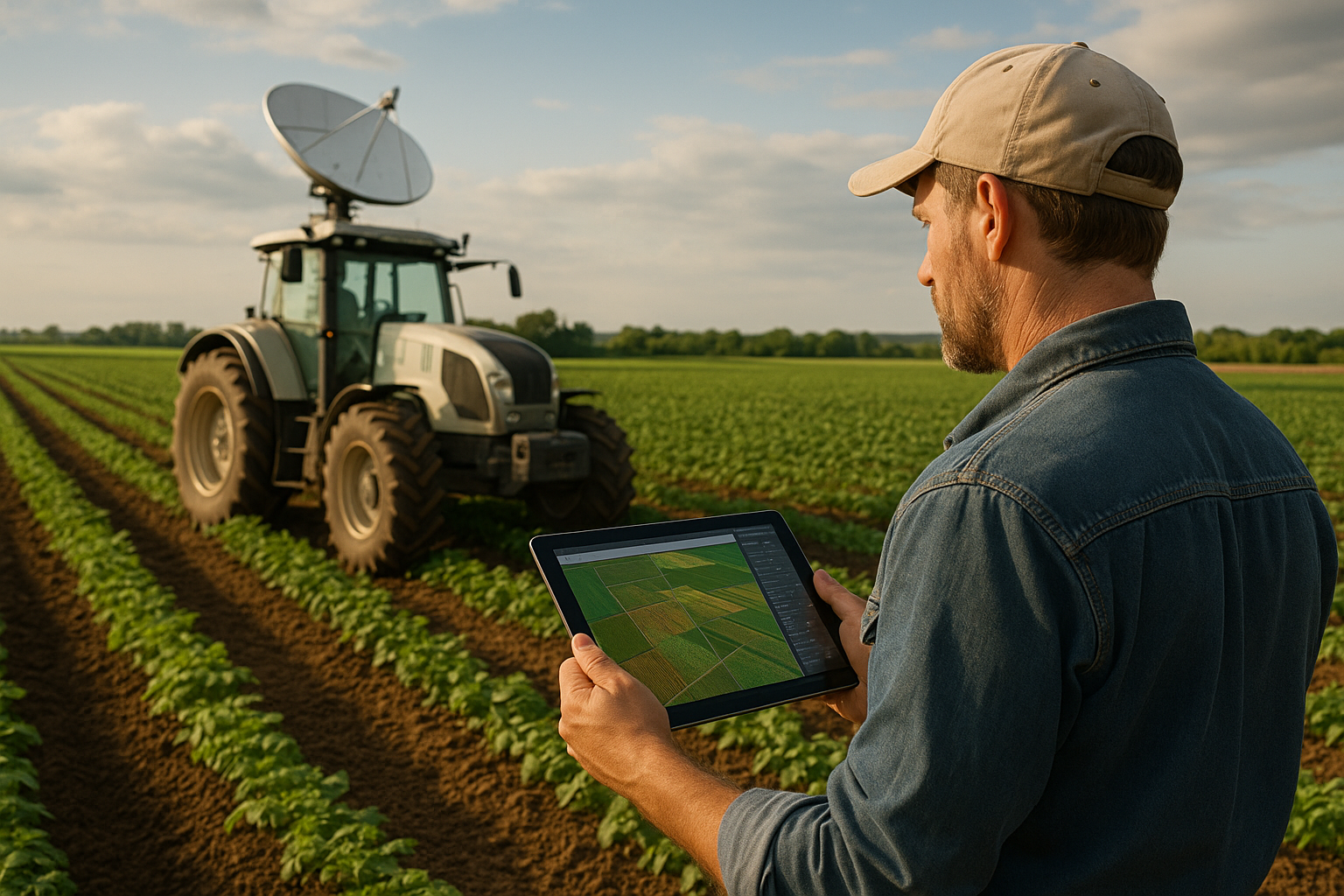How digital farming and precision agriculture are fueling rural development across Europe
Smart systems help minimize over-application of chemicals and water, improving both crop health and environmental protection. Automated irrigation based on real-time soil data, for example, results in more sustainable water usage, especially vital for regions facing climate stress. AI-driven platforms also support accurate yield forecasting and early detection of crop anomalies, leading to reduced waste and increased resilience.

Precision farming and digital transformation are emerging as critical drivers of economic revitalization in rural Europe, according to new research published in Land. The study, titled “Digital Transformation and Precision Farming as Catalysts of Rural Development,” outlines how smart agricultural technologies are enhancing productivity, reversing rural depopulation, and making farming more sustainable and attractive for future generations.
The authors employed a mixed-methods approach to assess the deployment of digital agriculture initiatives across the European Union. Their analysis highlights how technologies such as drones, AI-based platforms, satellite monitoring, and Internet-of-Things (IoT) systems are reshaping traditional agricultural practices. The findings suggest that precision agriculture is not only increasing efficiency but also creating new career pathways, strengthening food security, and energizing stagnant rural economies.
How Is Precision Agriculture Reshaping Farm Productivity and Sustainability?
The study identifies precision agriculture as a linchpin in the modernization of EU farming practices. By deploying technologies that enable site-specific monitoring and input control, farmers are achieving higher output with reduced environmental footprint. Satellite imagery, drone surveillance, and smart sensors provide continuous feedback on crop conditions, soil moisture, and pest risks. This allows farmers to make data-driven decisions that optimize fertilizer use, irrigation, and harvesting schedules.
One of the most significant outcomes is the reduction in resource consumption. Smart systems help minimize over-application of chemicals and water, improving both crop health and environmental protection. Automated irrigation based on real-time soil data, for example, results in more sustainable water usage, especially vital for regions facing climate stress. AI-driven platforms also support accurate yield forecasting and early detection of crop anomalies, leading to reduced waste and increased resilience.
Labor shortages, a chronic issue in many EU farming regions, are being partially mitigated by digital solutions. Autonomous machinery and AI-assisted logistics are taking over routine tasks, easing the burden on aging rural workforces and allowing farms to operate more efficiently with fewer manual inputs. In doing so, digital transformation is helping preserve the viability of small- and medium-sized farms traditionally vulnerable to economic shocks and demographic decline.
What Role Do EU Policies Play in Accelerating the Digital Shift?
EU strategies are instrumental in shaping the momentum of rural digitization. The study evaluates several key initiatives, including the Strategic Plans of the Common Agricultural Policy (CAP), the SmartAgriHubs program, and the AgData platform. These initiatives provide structural funding, research incentives, and cross-border collaboration frameworks that connect technology developers, policymakers, farmers, and academic institutions.
CAP Strategic Plans are embedding digital agriculture into national and regional policy agendas, linking environmental sustainability goals with innovation funding. Meanwhile, SmartAgriHubs has built an ecosystem of digital innovation hubs across Europe, facilitating knowledge transfer and supporting scalable pilot projects. AgData, another major EU initiative, is working to harmonize data governance across member states, ensuring that farmers and researchers can securely share and use agricultural data.
Cyprus, used as a case study in the research, illustrates the practical impact of these programs. Despite its limited natural resources and climatic constraints, the country has successfully implemented smart farming technologies supported by EU funding and policy alignment. The result is a measurable increase in agricultural efficiency and a demonstration of how even smaller member states can benefit from targeted digital investment.
The research underscores that financial support must be paired with human capital development. Training programs, technical upskilling, and community awareness campaigns are essential to ensuring farmers can adapt to and maintain these technologies. Capacity-building is especially critical for older farming populations who may be unfamiliar with digital tools but whose participation is necessary for widespread adoption.
How Does Digital Farming Impact Rural Communities and Demographics?
Digital agriculture is also influencing the broader social fabric of rural regions. The authors argue that smart technologies are making farming more appealing to younger generations by reframing agriculture as a data-driven, innovation-centered profession. This transformation is vital for countering youth migration to cities and ensuring the continuity of rural communities.
Additionally, digital agriculture opens new economic channels for rural areas. Tech-enabled farms require support services in data analysis, software integration, maintenance, and logistics, generating non-agricultural jobs that can be filled locally. This diversification helps rural economies transition from mono-sector dependency to more resilient, multi-dimensional models.
Improved digital infrastructure, often rolled out alongside smart farming initiatives, enhances connectivity and quality of life in rural regions. Better internet access not only facilitates agricultural operations but also enables remote work, online education, and telehealth services. These enhancements make rural living more viable and attractive, contributing to a gradual reversal of long-standing population decline.
The study stresses that this transformation must be inclusive. Ensuring that women, marginalized communities, and smaller farms have access to digital tools and training is essential for equitable rural development. Policies must guard against a digital divide that could deepen existing inequalities rather than eliminate them.
- FIRST PUBLISHED IN:
- Devdiscourse










